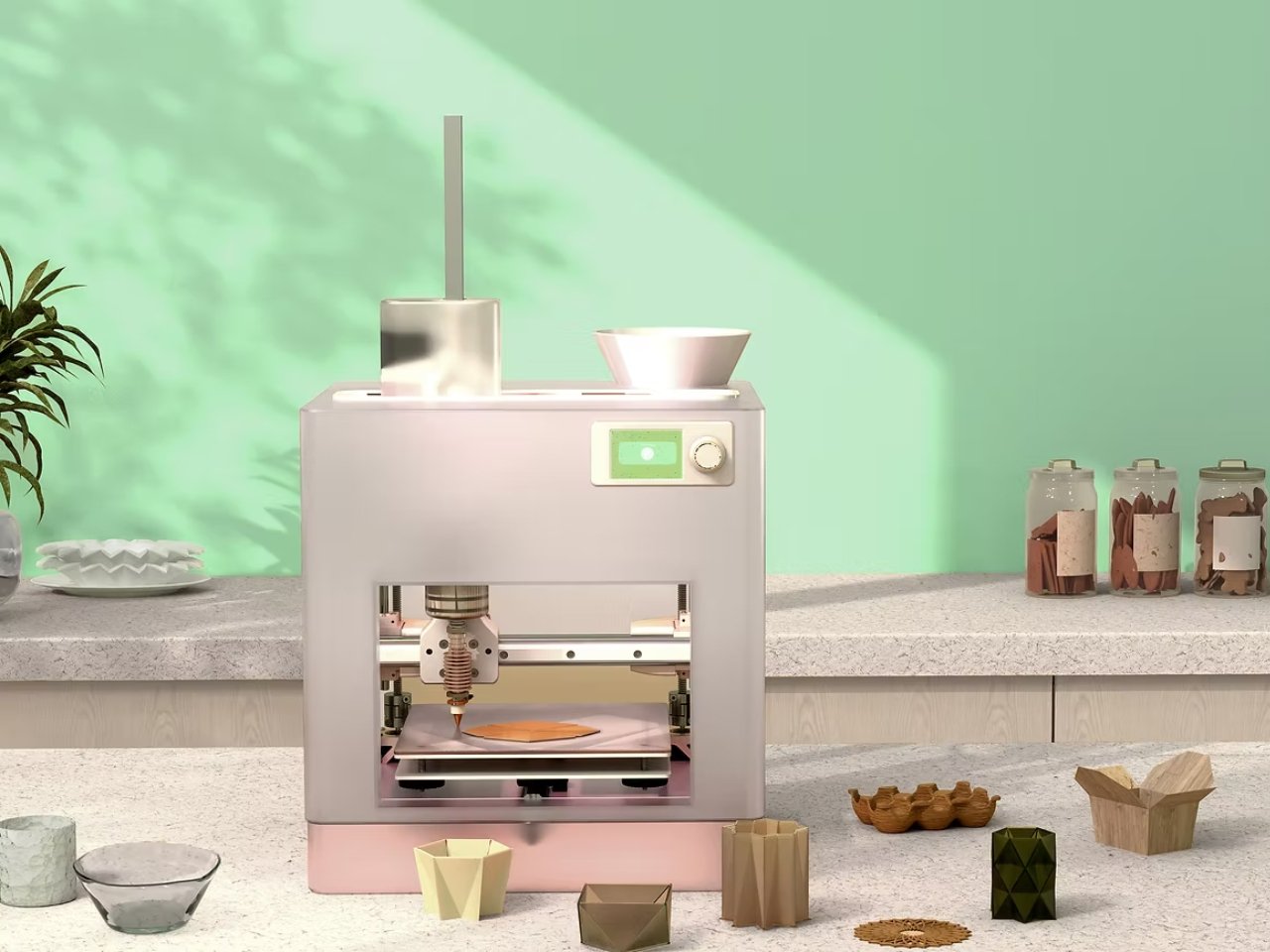There have been numerous studies conducted and articles written on how much food is wasted every day in the U.S. alone. Creative thinkers are developing innovative ways to prevent this waste from ending up in landfills, going beyond traditional methods like composting, reusing, or turning scraps into animal feed. It would also be great if the solutions they develop could be useful in our everyday lives.
Now imagine turning your banana peels, coffee grounds, and vegetable scraps into useful household items instead of throwing them away. That’s exactly what MIT graduates Yiqing Wang and Biru Cao have made possible with their groundbreaking invention, the Foodres.AI 3D printer. This innovative desktop device represents a completely new approach to dealing with food waste by transforming organic waste into functional objects.
Designers: Yiqing Wang and Biru Cao
The technology works through a combination of artificial intelligence and 3D printing. Users simply place their food waste into the machine, and the accompanying mobile app uses AI to analyze the materials through the phone’s camera. The system uses a self-trained object detection model to identify food types and assess their printability, then suggests appropriate “print recipes” based on the physical properties of your waste materials. The printer can create a wide variety of useful items from your kitchen scraps. Users can print cup holders, coasters, decorative items, and custom designs by simply dropping in food waste and selecting the desired form and size. The built-in material processing module helps users mix waste with natural additives to form a printable bioplastic paste, making the entire process seamless and accessible.
What makes this printer particularly user-friendly is its intuitive design that requires no prior 3D printing experience. The app provides a library of design templates, and users can also upload their own custom models. Once you’ve selected your desired object and size, the printer’s custom three-axis extrusion system converts your scraps into something useful. The environmental impact potential is significant, as food waste accounts for up to 50 percent of household organic refuse in the United States. The project began as part of research supported by the MIT IDEAS program, addressing the fact that 40-50% of household food is wasted before it ends up in landfills or compost bins. By enabling people to repurpose non-edible leftovers and organic matter into functional items at home, the Foodres.AI printer promotes what the creators call “hyper-local circular economies.”
Beyond its practical applications, the Foodres.AI printer represents a shift in how we think about waste. Instead of viewing food scraps as something to be disposed of, this technology encourages users to see them as raw materials for creation. By making sustainable behavior interactive, creative, and rewarding, the product builds a community-driven culture of eco-consciousness. As concerns about environmental sustainability continue to grow, innovations like the Foodres.AI printer offer practical solutions that individuals can implement in their own homes, making circular living both achievable and engaging for the average person.
The post 3D printer with AI can turn food scraps into useful items first appeared on Yanko Design.

